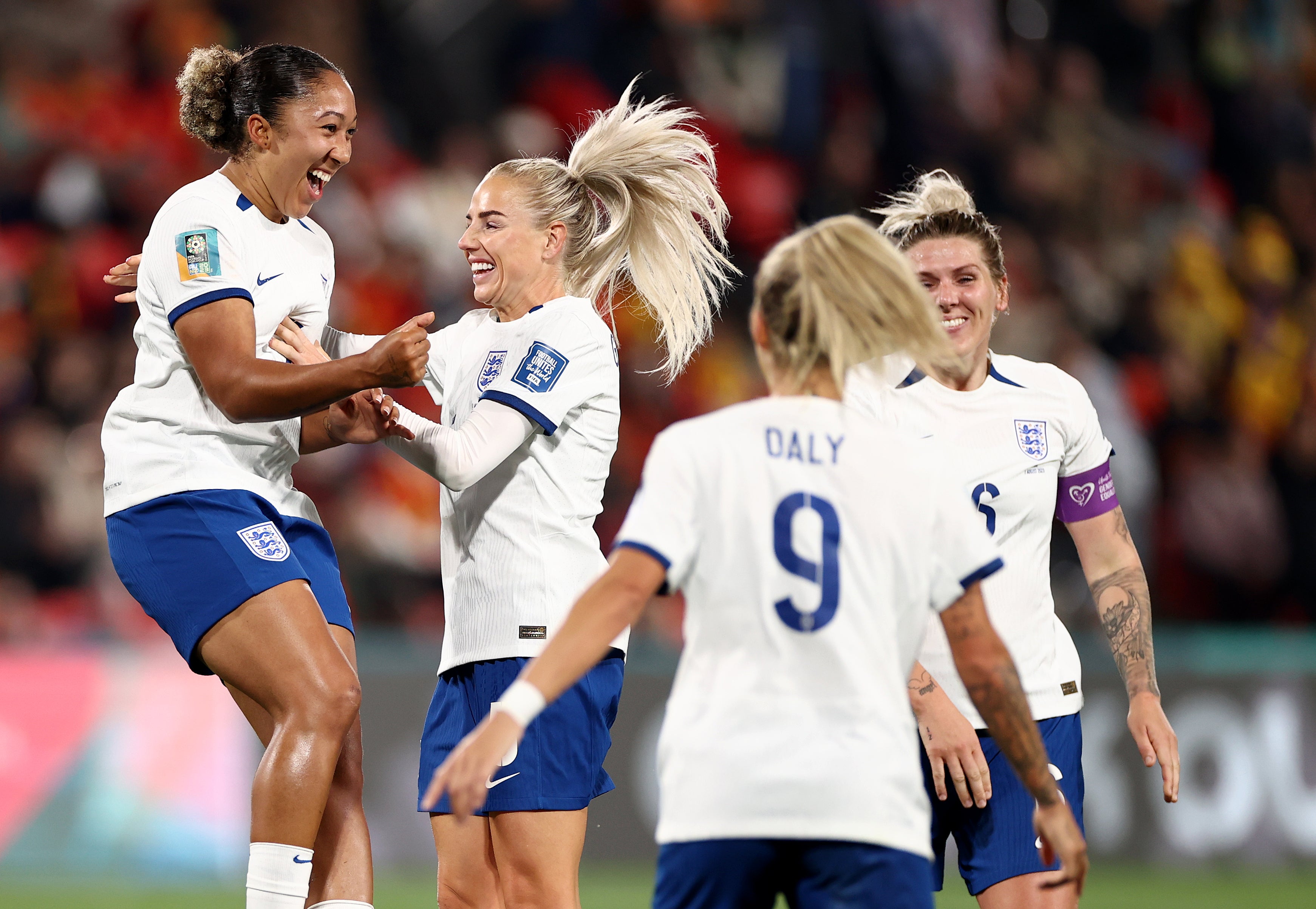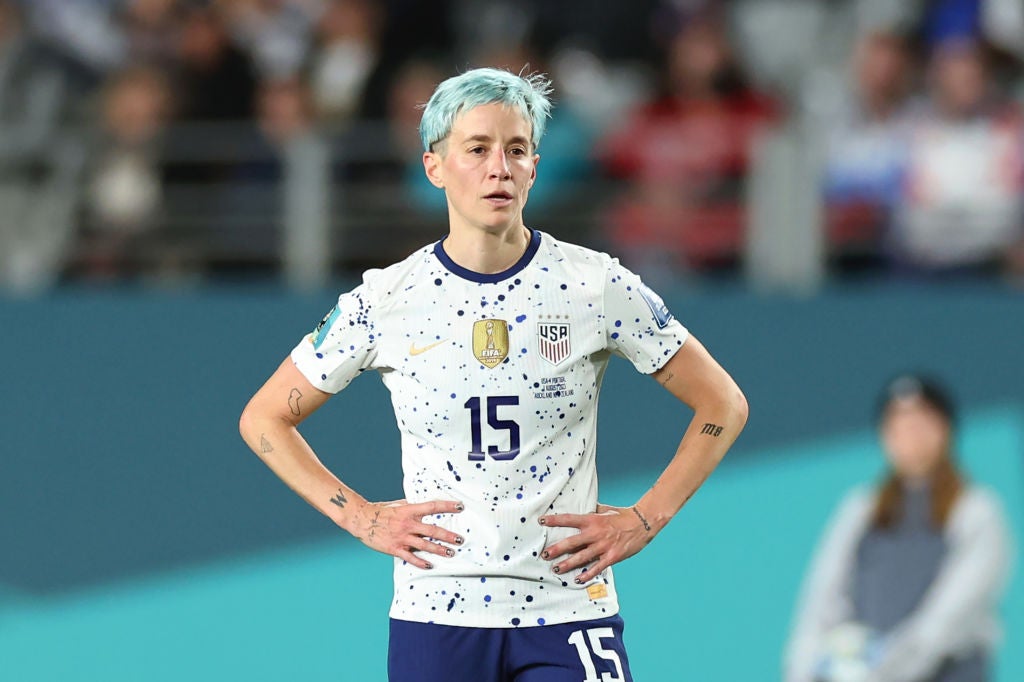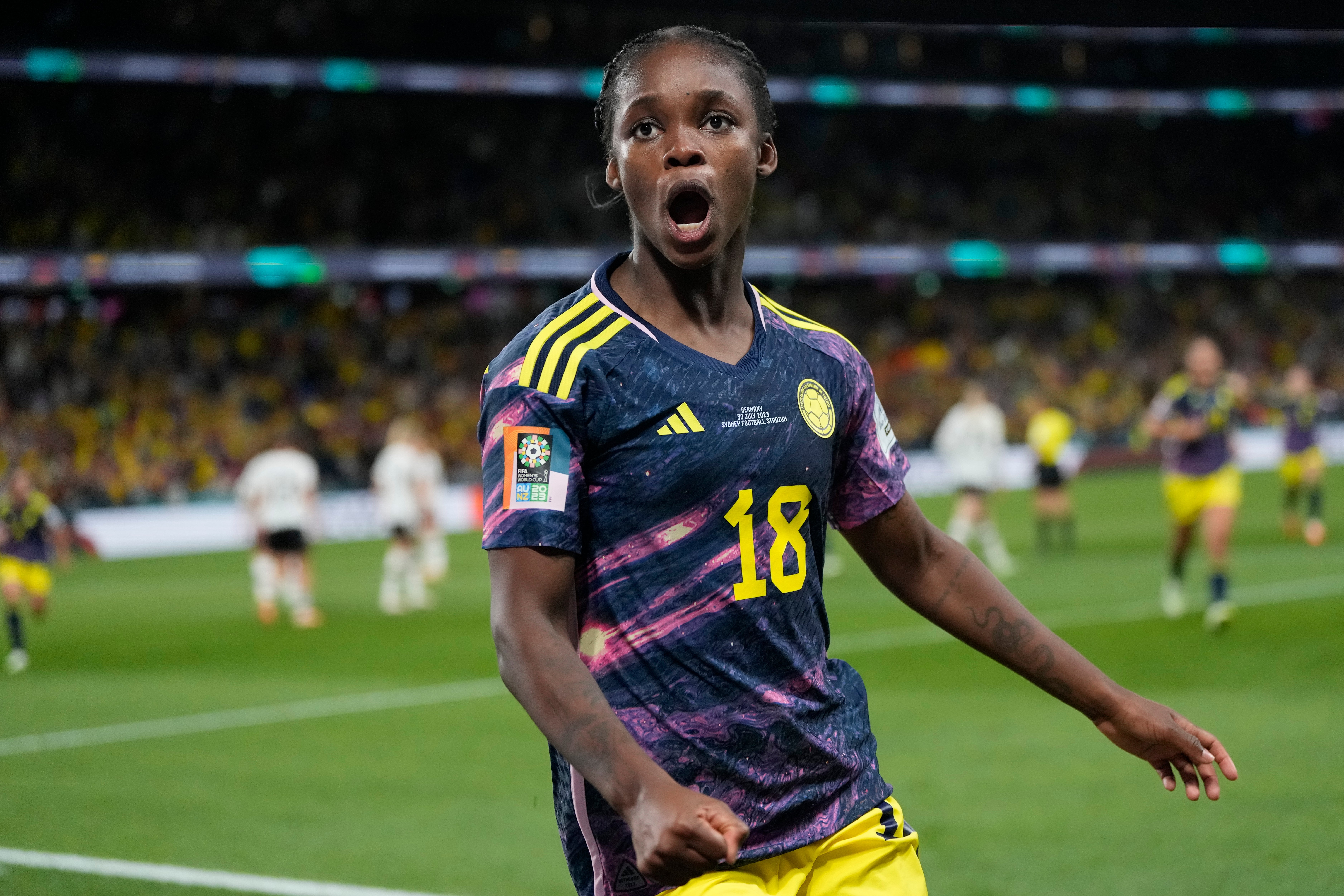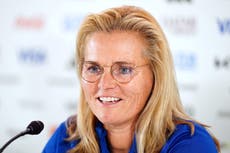Can England break cycle of World Cup shocks or will underdogs continue to thrive?
The Women’s World Cup 2023 has been full of upsets, with favourites knocked out ahead of the last 16

After 16 days and a group stage that was full of twists and turns, the state of play at the Women’s World Cup remains largely as it was before the start of the tournament: there is no standout favourite. Despite the shock exits of Germany, Brazil, and Canada, the tournament remains open to a number of teams and the list of contenders grew as the group stage progressed. No one is ruling out anyone, though as ever, when it comes to teams punching above their weight, the question at this point in the World Cup is how long they can sustain their momentum.
One of the differences between this year’s last-16 to four years ago and previous tournaments is there are more games than usual at this stage where there is a clear underdog. That, of course, is a result of a group phase like no other in Australia and New Zealand and its string of high-profile shocks. South Africa-Netherlands, Nigeria-England, Morocco-France, and even Jamaica-Colombia, all carry the edge of potential surprises.
England will be the side that either succumbs to it or who put their foot down and break the spell of the upsets deeper into the World Cup. Sarina Wiegman’s team can benefit from the draw landing in their favour, even though the lesson from the group stage is that no side in their section can be taken lightly. With Nigeria to play and one of Colombia and Jamaica to potentially follow, it couldn’t have worked out any better when the alternative in the knockouts was facing Australia and then one of France or Germany.
But England’s growing optimism is also down to how they have improved their own chances. The Lionesses have been on a strange journey since winning the Euros, where injuries to key players took away a lot of the confidence becoming European champions gave them, only for much of it to return thanks to one performance against China where Wiegman produced a new formation and with it, created a new favourite all over again.
England’s greatest strength, apart from Lauren James, is suddenly their unpredictability after Wiegman changed her plans and landed upon a formation that worked to not only exploit China but bring the best out of her remaining players, following the injury to Keira Walsh.
What is encouraging for England is their performance against China was reminiscent of one of their displays during the Euros, even with a line-up that is completely different to the team that started throughout last summer. England are a ball-dominant side, only Spain had more possession and completed more passes during the group stage, yet they can also mix up their play through long balls, switches of play and attack through a variety of angles.
The formation change released those aspects of England’s play, while it also helped break an over-reliance on crossing from wide areas. The goals are also back; James has shown she can score from anywhere, but it was important that Alessia Russo, Rachel Daly, Lauren Hemp and Chloe Kelly all found the target before the knockouts as well.
The draw appears stronger in the opposite half to the Lionesses, which is the reverse of how many thought it would play out pre-tournament. The emergence of Japan as a contender has contributed to that. The 2011 champions were considered to be a side in transition but have so far played the best football of the tournament. They have a clear tactical plan and Japan’s players are well drilled in the system they have chosen to play. Japan finished the group stage with the most goals and expected goals (xG) of any team at the tournament, but it’s about the only statistical category in which they do dominate. Japan aren’t near the top when it comes to passes, possession, or even shots. Everything is instead built on efficiency and maximising the quality of their goal-scoring opportunities. Japan’s shape, with wing-backs and two No 10s, has allowed this, while the outstanding service from Yui Hasegawa and Jun Endo feeds the players who have taken their chances.

All of this could change the second Japan face a side who are able to counter their system. Japan’s 4-0 win over Spain was the statement result of the group stage, but it came as they produced the perfect game plan to exploit Spain’s high line and the space their possession-based style leaves in behind. That said, it was still a closer game than the scoreline suggested, with Japan taking their chances while absorbing all of their European opponents’ possession and pressure.
Everything has gone right so far for Japan, but the high-pressure environment of a knockout game is a different test. Could Norway be the opponent to properly challenge them? It’s been a chaotic tournament for Hege Riise’s side and the staggering absence of any cohesion in their opening defeat to New Zealand and subsequent draw against Switzerland suggests they will struggle against an opposition that operates as smoothly as Japan.
Japan, meanwhile, highlighted the pieces missing from Spain’s side that they ultimately could do without in the thrashings of Costa Rica and Zambia but were glaring absences in the 4-0 defeat. Defender Mapi Leon and goalkeeper Sandra Panos, two of the 15 players who made themselves unavailable for international selection last September as they criticised a lack of support from the Spanish Football Federation, are key parts of the high defensive line that has looked creaky at the best of times under head coach Jorge Vilda. The way Japan took it apart despite having so little possession could impact Spain’s confidence in their system, although Switzerland, their opponents in the last-16, do not carry the same pace or individual threats on the counter-attack.

In the same half of the draw, the USA may be having their own crisis of confidence, given the sense that their reign as two-time champions is drawing to a close and a fan base that is close to meltdown back home. Having narrowly avoided a group stage exit against Portugal, coach Vlatko Andonovski has drawn much of the heat for the USA’s insipid performances. The debate off the pitch over what has gone wrong has been fierce, yet the team’s displays have so far lacked any of that same emotion. Andonovski’s side showed some glaring flaws against the Netherlands and Portugal, with no control in midfield and no sense of how to press or create chances,
After finishing runner-up in Group E, the USA will face a Sweden side who are organised, defensively sound and confident at keeping the ball – essentially everything the USA are not. Along with Japan, Sweden have been one of the most efficient teams in front of goal at the World Cup, but a key difference is much of their threat has come from set-pieces and the deliveries from Jonna Andersson, with Amanda Ilestedt a frequent target at the front post, leading to three goals already. Sweden thrashed the USA 3-0 when they met in the group stages of the Olympics two years ago: a repeat would be a hugely humbling way for the defending champion’s dominant run at the World Cup to end, albeit an inevitable one given their run so far.
Meanwhile, South Africa, Jamaica and Morocco are all looking to extend theirs, having already broken new ground at the World Cup. South Africa and Nigeria, who have reached the quarter-finals before but will be underdogs against England in the last 16, are naturally more dependent on scoring goals than keeping them out; South Africa have been inspired by their brilliant forwards Thembi Kgatlana and Hildah Magaia, who have acted decisively to be central to their big moments, while Nigeria’s inspiration is led by Asisat Oshoala. South Africa, in particular, appear to have a good match-up with the Netherlands, who build play slowly from the back and have defenders who could be susceptible to the counter-attack.
Jamaica’s historic progress has been built on a resilient defence that is yet to concede a goal at the World Cup. Lorne Donaldson’s side have needed to be secure as they do not create many chances, even if they have a striker in Khadija Shaw who is decisively clinical when in front of goal. That Colombia go into their tie as favourites to win is interesting, after shocking Germany and topping Group H. While they have an absolute star in Linda Caicedo, Colombia’s best results have come when they have been able to be the underdog.

Both of their wins, against Germany and South Korea, also came from Colombia outperforming their xG, with Caicedo’s brilliance helping to explain that. Although they were already through when they played Morocco, Colombia’s display in the 1-0 defeat was hardly convincing. Morocco, through so unexpectedly at Germany’s expense despite losing 6-0 to them in their opening fixture, may have exceeded their ceiling. France have struggled a bit for rhythm, but that is a fixture where they should be able to play in a manner that suits them.
Australia may await in the quarter-finals, but the big question around the co-hosts remains the fitness of Sam Kerr. Ironically, it comes after the Matildas found a system that worked without Kerr in the 4-0 destruction of Canada, but the return of their captain and star striker could even elevate that and give Australia a fresh boost for the knockout stages. They could be the team with momentum behind them should Kerr return to inspire the hosts all over again. Denmark are dangerous opposition in the last 16: their defensive, counter-attacking system is unlikely to win them the World Cup but it is enough to pull off a shock. It’s what has defined the World Cup already and now the stage is set for plenty more.
Join our commenting forum
Join thought-provoking conversations, follow other Independent readers and see their replies
Comments



Bookmark popover
Removed from bookmarks